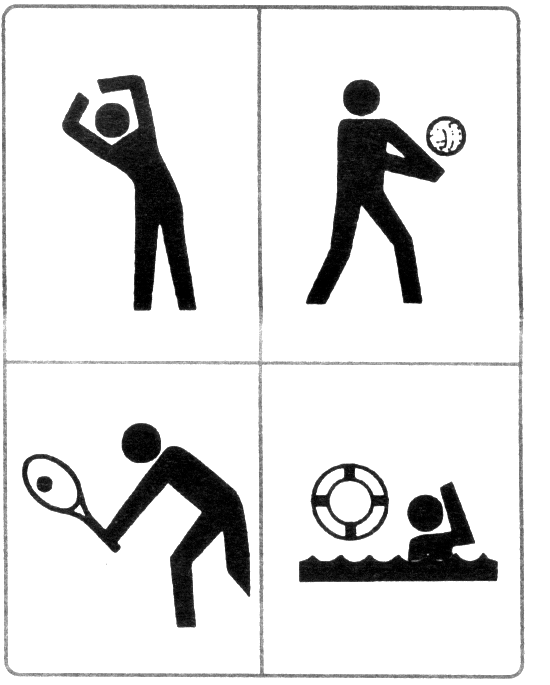Adolescents with scoliosis and their families have questions concerning
exercise. These questions are usually about two general areas:
- Can exercise correct or stop the progression of the scoliosis
curve?
- Are recreational exercise and sports participation advised?
In this article, we will present some of the advantages and limitations
of exercise for adolescents with scoliosis. Adults with scoliosis,
including those with corrective surgeries, often also seek advice
about exercises, especially if they begin experiencing discomfort
and stiffness in their backs. Therapeutic and recreational exercise
for adults will be presented in a future article.
Programs
Several programs aimed at correcting or arresting scoliosis have
been proposed over the decades. Through these programs one attempts
to exert corrective forces on the spine by active contraction of
trunk muscles in directions thought to reverse the scoliosis curves.
Some approaches seek positions and postures which are noted to reduce
the scoliosis deformity.
Additionally, stretches are often performed, which aim to increase
the mobility of the spine in a corrective direction. After mastering
these exercises, postures and stretches under the supervision of
a physical therapist, attempts are made to maintain corrective muscle
tone and postures during daily activities.
Some programs also include breathing exercises. Chest movements
noted during deep breaths cause temporary rotation of the thoracic
vertebrae in a corrective direction in some people with scoliosis.
Minor reductions in measurable lung capacities are often found in
people with scoliosis and large thoracic curves, and breathing exercises
have also been directed at improving this.

Bracing and Exercise
Exercise programs have often been prescribed for those wearing
corrective scoliosis braces. These are intended to help the wearer
adapt to the brace, to encourage the active correction of the spinal
deformity, and to maintain the trunk musculature during the bracing
program. This is done by actively shifting laterally in the direction
of the correction (away from the brace pad), by extending the trunk
while in the brace, and by taking deep breaths.
Other trunk and pelvic exercises are also taught and the brace-wearer
is instructed to perform these several times per day. Most programs
are initially supervised by physical therapists, and are followed
by the development of daily home exercise regimens.
Benefits of Exercise
In general, little scientific evidence exists about the effectiveness
of exercise programs for preventing progression of scoliosis curves,
or for reversing curves to any clinically or cosmetically significant
degree.
By scientific evidence we refer to carefully designed clinical
studies where a true effect of exercise has been demonstrated. Some
short-term reduction of curve angles (by several degrees), and minor
improvement in breathing volumes have been observed for small groups
of people with scoliosis who have undergone exercise programs.
Others in these programs, however, were not helped, and some were
noted to have curve progression during exercise. For those with
slight improvement in curves, it was not determined whether these
changes had any lasting effect, nor were these noted to be cosmetically
or functionally noticeable.
Even for exercise programs directed at improving the results of
scoliosis bracing, the results have been disappointing. Bracing
alone has been found to be as effective as bracing and exercise.
Because of this, therapeutic exercise programs are not universally
recommended by scoliosis experts. When prescribed, exercise programs
are usually initiated in addition to, and not instead of bracing
treatment. Careful monitoring of curve angles remains essential,
regardless of exercise.
Therapeutic exercise should never be considered as an alternative
to recommended surgery when a scoliosis curve is severe and progressive,
and the patient and family have decided on surgical correction.
Fortunately, most people with scoliosis are completely normal in
their ability to participate in sports and recreational exercises.
For some with severe deformities leading to respiratory function
changes, and for those post-scoliosis surgery patients, some sports
restrictions may be advised. Your scoliosis specialist can make
recommendations concerning these. No information exists to suggest
that recreational exercise and sports participation worsens, or
in any other way affects scoliosis curves.
"Scoliosis is not caused by a deficiency of strength or flexibility,
and therefore exercise is relatively ineffective in correcting scoliosis.
Equally important, scoliosis is not a result of exercise, and therefore
normal physical activities can be enjoyed by people with scoliosis
without concern".
Children and adolescents with scoliosis can be expected to participate
in organized sports, school physical education programs, and normal
neighborhood recreational activities. For most, resistive exercise
training to build muscle strength and endurance training to improve
cardiovascular conditioning can be performed when desired.
Children enrolled in a scoliosis bracing program are generally
allowed out of the brace for organized sports. In addition to the
lack of adverse effects and improved fitness, regular recreational
exercise can reinforce that one is normal and healthy despite scoliosis.
The causes of scoliosis appear to be independent of exercise. Scoliosis
is not caused by a deficiency of strength or flexibility, and therefore
exercise is relatively ineffective in correcting scoliosis. Equally
important, scoliosis is not a result of exercise, and therefore
normal physical activities can be enjoyed by people with scoliosis
without concern.
The NSF would like to thank co-authors, James Rainville, M.D.,
and Frank Rand, M.D., for their work on this article. Dr. Rainville,
a Physiatrist, is Assistant Clinical Professor, Department of rehabilitation
Medicine, Tufts University Medical School-Boston, and also Director
of rehabilitation, New England Spine Care Center, Chestnut Hill,
MA. Dr. Rand is Instructor in Surgery (Orthopedics), Harvard Medical
School, Boston, and Director of Orthopedic Programs, New England
Deaconess Hospital, Boston
Back to Medical Updates